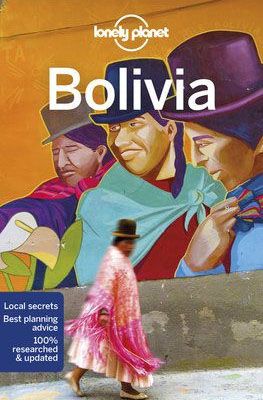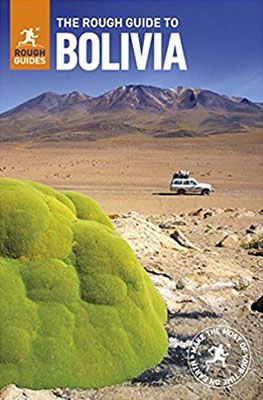Potosi is located about 150 kilometres southwest of the ‘white city’ of Sucre. The main attraction of the city – once the largest and richest place on the entire continent of America – is the silver mine of the Cerro Rico. Over the centuries, approximately 60,000 tons of silver has been mined. The mines are still in use but no longer for silver.
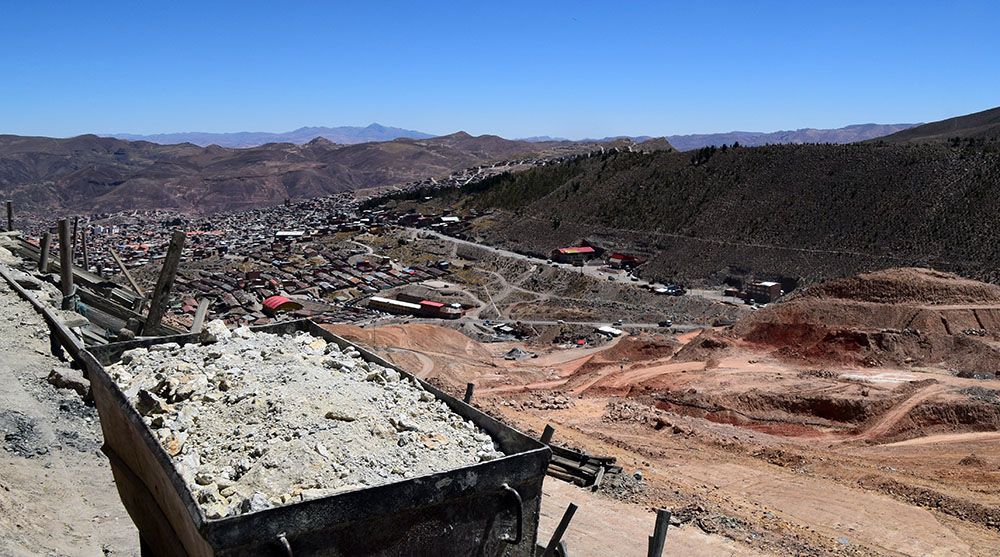
Potosi
Potosi was founded in 1546 after the discovery of silver in the Cerro Rico. The mines that were then built are the richest in the history of the world. According to reports, the silver from the Spanish silver fleet, which was taken over by Dutchman Piet Hein, also comes from Potosí.
Part of the wealth of the mines was used to build beautiful Baroque churches and monasteries. The Spaniards mainly put the local population and African slaves to work in the mines. Over the centuries, an estimated five million miners lost their lives.
At the end of the 18th century, beginning of the 19th, the silver mines were exhausted and tin became the most important mineral. Since then, the UNESCO World Heritage Site town has fallen into disrepair. However, the rich history of Potosí is still reflected in its narrow streets, colonial mansions and many churches.
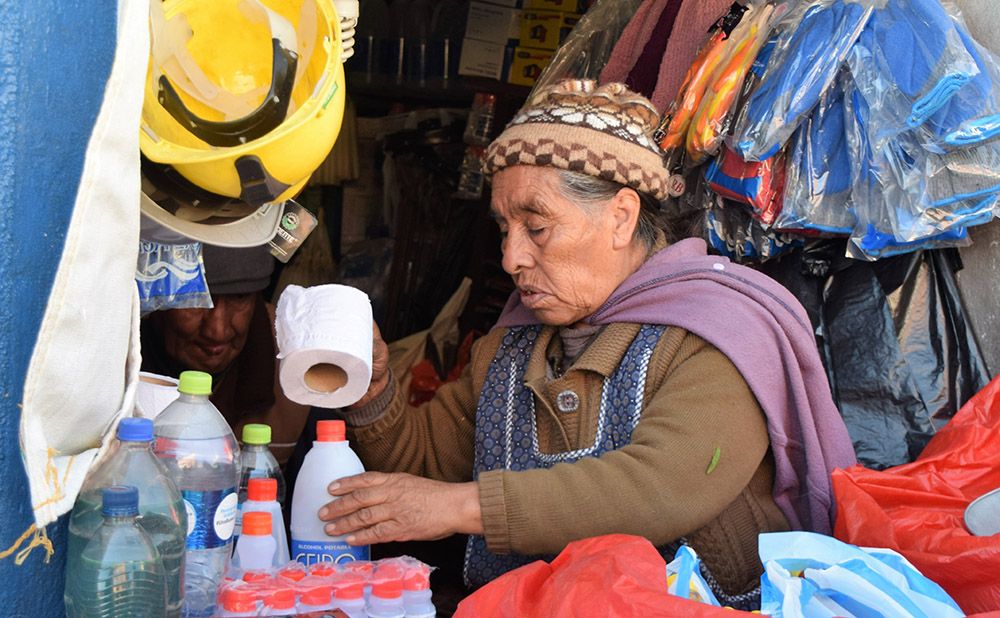
Sightseeing in the city itself
The main attraction of Potosi is the former silver mine. But the city has much more to offer than just the mine. The former royal minting house, Casa de la Moneda, which is now a museum, is well worth a visit!
Another interesting sight is the Monastery of the Carmelite Order (Museum de Santa Teresa). Virgins of 15 years old from rich, well-to-do families came to this monastery and were never allowed to see their families again. Only behind a thick door were they occasionally allowed to talk to the parents. A beautiful museum and a very good tour.
For a fantastic view of the surroundings, you have to go to the Compañia de Jesus. This church is one of the many examples of Mestizo architecture. For a small fee you can climb the bell tower in front of the view.
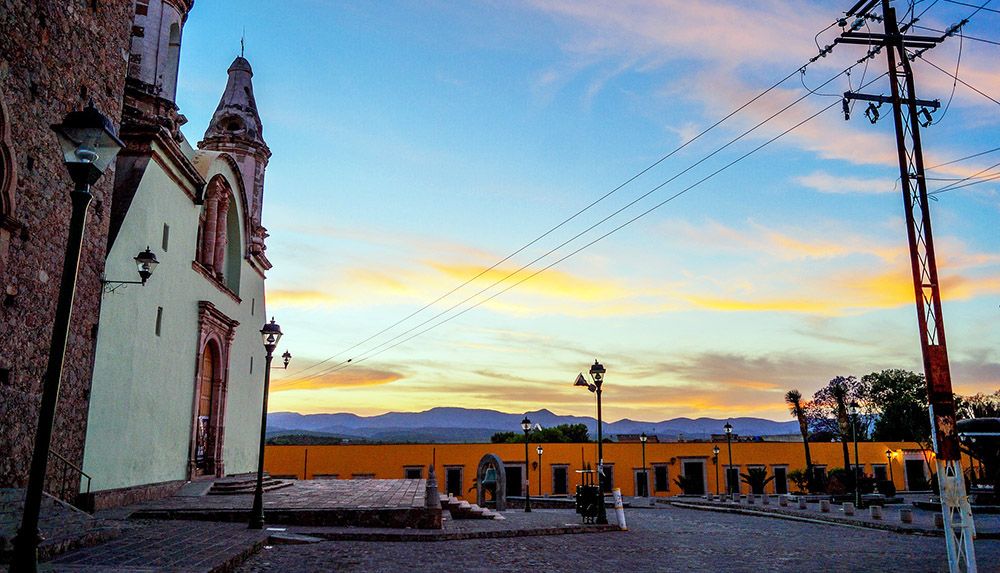
Visit the mines of Potosi
A visit to the mines, the main attraction of Potosi, is not without controversy. It is a rather shocking experience because the way of working hasn’t really changed since colonial times. The working conditions are really miserable. Most of the miners who often work in the mines for many days in a row, die of silicosis at the age of forty. The approximately 10,000 miners do so because there are no alternatives for them.
We did the tour. It starts with what we consider to be a hilarious visit to the market to buy gifts for the miners. Think of cocoa leaves, cigarettes and even dynamite rods! Then you go into the mines under supervision. Your visit takes about two hours. What makes it special is that you have plenty of opportunity to ask questions to the miners themselves. But because you love them for their work, you give them a gift. By the way, although we speak a bit of Spanish, it is very difficult to understand the answers of the miners. Your guide will then summarise the answer in clearer Spanish or English.
Fairly at the beginning of the mine is a statue of a kind of guardian angel called ‘El Tio’ (the uncle), who looks more like a devil. The miners sacrifice to the statue because they then enjoy protection.
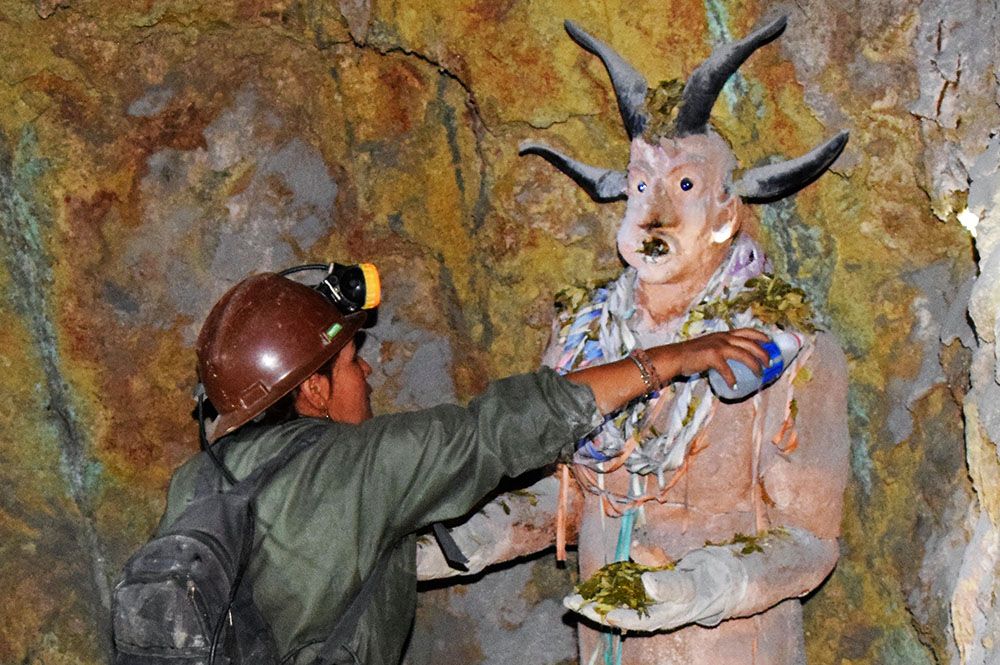
Practical matters
Not for everyone
The galleries in the mines are narrow and low, sometimes so low that we, as tall Europeans, have to crawl. You also have to climb a lot of steps of ladders. That’s why a visit to the mines is certainly not a recommendation for people who are less agile or are not in good condition. Also if you get claustrophobic easily, a visit to the mine is definitely not recommended.
How to get there
The nearest big city is Sucre, from where there is an hourly bus to Potosí in three hours’ time. A better option might be to share a minibus with other travellers. These are more comfortable and faster. If you come from La Paz, it is best to take the night bus from El Dorado to Sucre. The buses are not very new but comfortable. From the large, new bus station at Potosí it is a 30-minute walk to the city centre. It is better to take the bus or shared taxi.
Where to stay in Potosi
In Potosi, there are quite a few hotels and guesthouses of good quality and price. We stayed in Tukos la Casa Real. At 5 minutes’ walking distance from the square is the cosy eatery Cafe la Plata where you can enjoy good food.

